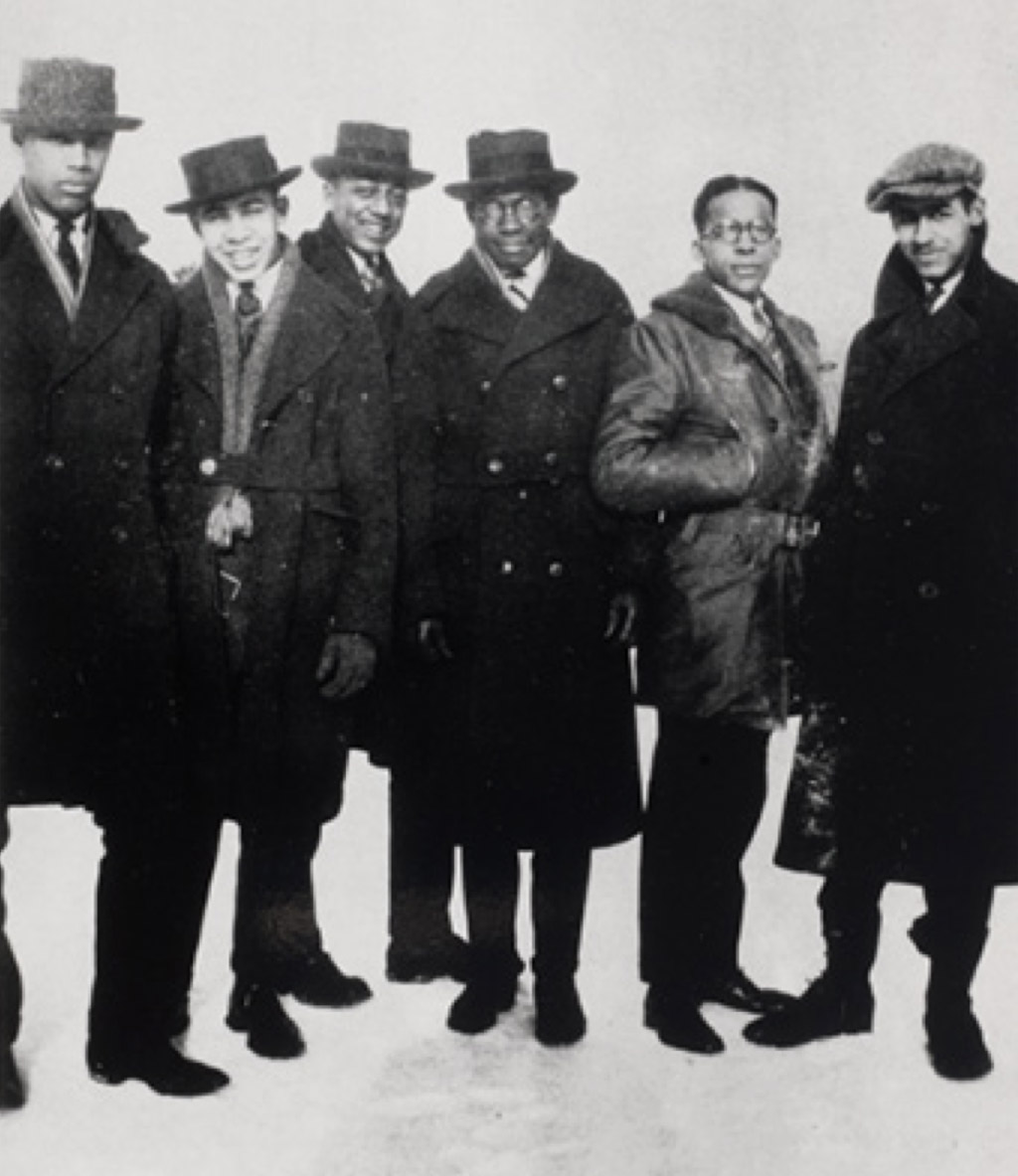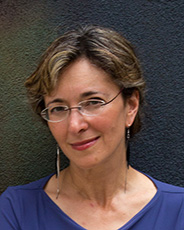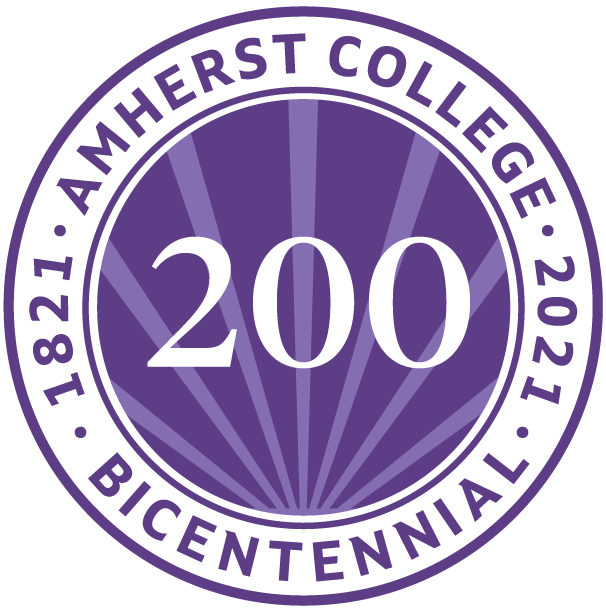On the occasion of Amherst’s Bicentennial, we present an excerpt from Eye, Mind, Heart: A View of Amherst College at 200, one of the keepsake Bicentennial books commissioned by the College.

The inauguration of Alexander Meiklejohn. Despite raising Amherst to a new level of excellence, he will be forced out by the trustees in 1923. (Brian Meacham Collection of Amherstiana)
Goodbye, mediocrity. Suddenly your college is prestigious. At the turn of the 20th century Amherst was known as “an agreeable, leisurely, semi-educational country club, where by doing a modicum of work you could spend four pleasant years and come away with a college degree,” to quote The Amherst Student.
That was before Alexander Meiklejohn. It would be difficult to overstate his impact on the College, which he reshaped into a place known for its excellence and intellectual seriousness. Appointed president in 1912 at the unusually young age of 40, he tosses out Amherst’s previous devotion to Christian piety and replaces it with his own educational philosophy: “The task of the teacher is the making of minds.”
How does Meiklejohn work his magic? He completely revamps the curriculum and forces out underperforming faculty. Here, he writes of the splendors of intellectual activity: “To give our boys that zest, that delight in things intellectual, to give them an appreciation of a kind of life which is well worth living, to make them men of intellectual culture—that certainly is one part of the work of any liberal college.”
By 1923, when Meiklejohn is forced to resign, the College has earned a national reputation. Walter Lippmann, a leading journalist of the day, comments that Amherst under Meiklejohn has “produced as remarkable a student body as I have encountered.” Likewise, The New Republic comments: “For several years it has been generally assumed that a recent Amherst graduate might be expected to display an unusual measure of intellectual vigor, of personal and moral distinction.”
Getting In
The admissions process has changed drastically since 1871. First of all, did you attend prep school? Then you’re in luck. Since 1891, the college has offered Admission by Certificate, which allows graduates of “certain preparatory schools” to be admitted without taking entrance exams. You simply need a certificate from the school stating that you have the academic background Amherst requires. (Among those “certain schools” is Dunbar High School, an all-Black public school in Washington, D.C.)
If you are not so fortunate, then Amherst spells out elaborate expectations for your high school studies. The details fill 33 pages of the College’s catalog in 1921–22. In addition, you must take an entrance exam and all applicants “must present satisfactory testimonials of good character.”

African American students at Amherst, about 1923. For several decades Dunbar High School, an elite Black public school in D.C., becomes a pipeline to Amherst, sending the College many outstanding graduates. (Charles W. Lewis [AC 1923] Biographical File, A&SC)
Amherst, with about 500 students, is markedly more diverse in 1921 than 50 years earlier. The real change is evident in the incoming freshmen for the class of 1925. President Meiklejohn has publicly endorsed the idea that Amherst should look more like America — rather than remain an exclusively “Anglo-Saxon college” — and it seems to be taking hold.
There are four African Americans in ’25, the most ever for an Amherst class. Of them, three hail from Dunbar High School. How about this for a trio of classmates? Montague Cobb will become the first African American Ph.D. in anthropology; Mercer Cook will become U.S. ambassador to Senegal; and William H. Hastie will become the nation’s first Black appellate judge.
Another member of ’25, James Batal, is likely the first Amherst graduate of Lebanese ancestry. (He becomes a well-known journalist covering the Middle East.) His classmate, Stanley Marcus of Dallas, stays only one year before transferring to Harvard. There—unlike at Amherst—as a Jewish student he can join a fraternity. (He will become CEO of Neiman Marcus, the luxury goods retailer.)
The class of ’25 also has three international students, two from Japan (Cuthbert McKay and Hisamoto Nakagawa) and one from China (Howard Lou).
In terms of national distribution, New Yorkers (161) now outnumber students from Massachusetts (116). Amherst’s reach is spreading westward: 21 arrive from Ohio, for instance.
Although most Amherst students come from affluent backgrounds, the College retains its commitment to financial aid. As a pamphlet for the Centennial Fund states: “No man has ever had to forgo the privilege of Amherst training because his parents were poor.”
In 1920 Meiklejohn launches a bold initiative: offering courses taught by Amherst professors to labor union members from Springfield and Holyoke. The idea is unpopular with conservative alumni, who find it “bolshevist.”
“The Labor College is an expression of the belief that a liberal education should be available to all who feel the need of it,” states the College catalog. “Besides giving the working man or woman an opportunity to meet more intelligently the issues of the day, it will also make it possible for the professors to study labor conditions more directly.” (Note: Women get access to Amherst classes through the Labor College a half century before Amherst becomes coeducational.)
College Life

A freshman beanie, symbol of humiliation. All freshmen are required to wear them in 1921, and the beanie tradition will not die until the class of 1961. (Photo by Stephen Petegorsky for Amherst College. Amherst College Objects Collection.)
“Before Meiklejohn,” says one alumnus, “we sat on the porch at Psi Upsilon, put our feet up on the rail, drank, and talked about fraternities, dates, and sports.” A few years into Meiklejohn’s tenure, “we sat on the Psi U porch, drank, and talked about frats, dates, sports, Epictetus, labor unions, and the problems of the liberal college. What a change!”
Gone is Christian piety. In the Roaring Twenties, the atmosphere is swank and jovial, and despite Prohibition the alcohol flows. Very likely you will join one of the 13 fraternities, unless you are Jewish, Asian or African American, in which case you are excluded. Amherst’s fraternity dances are known as the “most popular social occasions of the Connecticut Valley.” Already, a half-dozen fraternities have built imposing brick mansions on campus, paid for by alumni. Students often identify more strongly with their fraternity than with the College as a whole.
Freshmen face a fair amount of hazing. They must wear beanies (“the regulation pea-green Eton cap with a black button”) and can’t take a seat on a trolley car and must remain standing in chapel until the upper classmen and faculty leave.
Academics
To graduate you must fulfill two majors, study a modern foreign language, take a class in public speaking, join either the chorus or orchestra and attend P.E. The many requirements include one year of Latin or Greek and two years of science.
In 1915 Meiklejohn had pushed hard for a series of required interdisciplinary courses in Social and Economic Institutions, striving to make students “aware of the moral, social and economic scheme—the society—of which they are members.” But the faculty pushed back, reducing his idea to a single elective.
In 1921, 59 percent of students major in the humanities, 24 percent in the social sciences and 17 percent in science and math.

Author Nancy Pick ’83
Photo by Mandy Demuth
Graduation rates remain low. In the class of 1925 the non-graduates (96) outnumber the graduates (81). No one graduates summa. This seems consistent with Meiklejohn’s belief in high standards, which, he says, brings its own rewards.
And under his tenure, the faculty diversifies, if only briefly. In 1918 Amherst hires its first woman instructor, Madeleine Bôcher Utter, to replace a French professor “ad interim” during World War I. In 1921 the College hires Robert Percy Barnes, class of 1921, as an instructor in chemistry for one year: In 1933, Barnes will become Harvard’s first African American Ph.D. in chemistry.
As for the College’s graduates, the dean of Harvard Law School says, “Amherst has sent us regularly, for the past five or six years, a little group of men who have stood absolutely at the head of the Law School. Their prominence has been out of all proportion to their numbers. How the miracle has been wrought, I don’t know, but they are sending us men who know how to think.”
